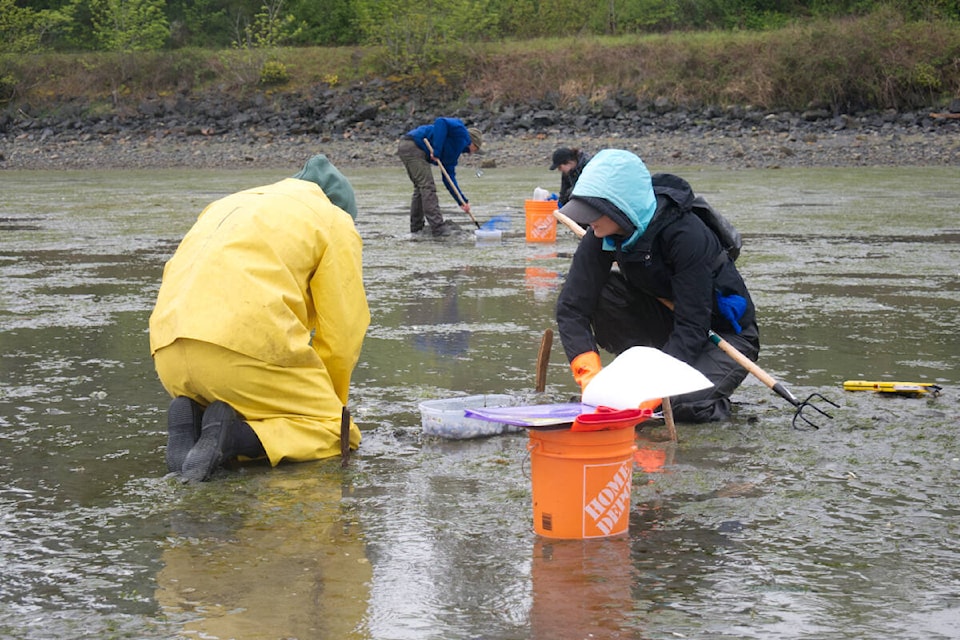Clam numbers in the Nanoose Bay Recreational Shellfish Reserve have decreased in recent years and researchers are not sure why.
Mount Arrowsmith Biosphere Region Research Institute (MABRRI) conducted a two-day clam abundance survey May 14 and May 15 to gather data for a sustainability research project that compares the abundance of clam species before and after the peak harvesting season.
“We have noticed since the time we’ve done this that our numbers have gone down,” said Jacob Frankel, survey co-ordinator and MABRRI senior research assistant. “But we can’t definitely confirm that is because of all the harvesting. A, because it’s a relatively new project, — numbers can naturally vary year to year, and then B, it also depends on the volunteer turnout we have.”
Volunteers worked in small groups to dig up, measure and identify various species of clams. By using rakes, participants dug 1m2 quadrats, 20 centimetres deep, strategically placed throughout the reserve.
MABRRI does this twice a year, Frankel said. They conduct a pre-season survey in the spring and then a post-season count in the fall. The project is relatively new and began in 2020.
“Basically we’re trying to analyze the impacts of recreational harvesting on the clam abundance in this area,” he said. “There is a concern about clams and shellfish, especially in areas that are experiencing things like climate change, pollution and then harvesting on top of that. So there’s a lot of factors that are affecting bivalves and filter feeders.”
READ MORE: B.C. clam harvester fined $10,000 for Fisheries Act violations
The survey was conducted on the reserve’s recreational side, but not other, which is First Nations tenure, according to Frankel.
Participants measured out roughly 400 to 500 metres into the intertidal zone and all the way to the shore. Randomly generated numbers on a grid determined which quadrats would be sampled to give the researchers the best idea of abundance, Frankel said.
At noon they headed in to count and measure the clams, as well as identify which species they found. Frankel said Manila clams are one of the most common, and are popular for harvesting, but varnish clams, butter clams and little neck clams can also be found.
Clams were placed in sacks and put in a bucket of water to keep them alive before they were measured, identified and then set down of the First Nations side in small holes, where they can dig themselves back into the sand.
Frankel said MABRRI hopes to conduct the biannual abudance surveys on a long-term basis so researchers can gain a holistic understanding.



